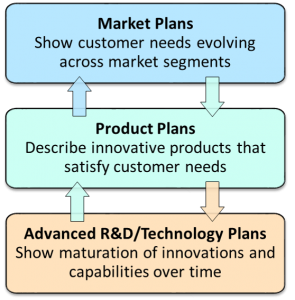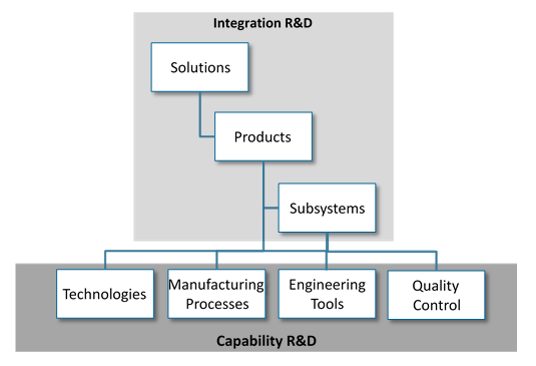Another interesting article from MIT Sloan Review discusses how to develop unique strategies and plans. The article points out that many organizations follow strategic frameworks taught in business schools to formulate their strategies.
…many deploy frameworks and models from the strategist’s toolbox — industry analysis, market segmentation, benchmarking and outsourcing. By jumping straight to generic game plans (such as cost leadership, total quality or product innovation), companies short-circuit the real work of strategy and miss out on finding new insights into the preferences or behaviors of current or potential customers.
If all we do is follow a standard process for developing a strategic plan, we would probably not be able to build a distinct, differentiated business:
In a world of fierce competition and rapid imitation, companies that dare to be different capture our attention and our admiration. Some are globally recognized, such as Apple, Google, Tata, Virgin and Zara; others are less well known, or are niche or local players.
The article points out that a good strategic plan starts from determining what are the organizations fundamental beliefs (or culture, values, points of view, differentiators, etc) that set it apart:
Good strategies start from a distinctive point of view: for example, an insight into evolving customer needs or about how the world is changing.
However, what are our unique beliefs or viewpoints? It is not easy to figure out what are an organizations true cultural traits that lead to success and what are just approaches that we have developed along the way.
The article gives a good example of Ikea trying to figure out the root causes of its success:
Consider the case of Ikea, the Swedish furniture retailer that continues to be highly distinctive almost five decades after its founding in 1963. Built on Ingvar Kamprad’s belief that he could “create a better everyday life for the many people” by providing affordable, good-quality furniture, the company grew internationally in the late 1960s and early 1970s by replicating what worked in Sweden.7 However, Kamprad and his colleagues didn’t fully understand which parts of their offering people actually cared about: Was it the expansive and customer-friendly showrooms? Was it the low prices and the products requiring relatively easy assembly? Was it the quirky Swedish product names and blue-and-yellow branding? Ikea’s repeated success in new markets it entered made executives wary of changing any part of the original formula.
Differentiators are even harder to figure out in case of R&D. Many organizations make strategic decisions based on gut feelings without really having an approach to guide decision making. As we have discussed many times, most companies tend to develop product strategies without careful thought or experimentation.
However, few companies manage to develop original strategies by formulating hypotheses and then testing them out in a competitive setting.
In case of Ikea, market realities in United States and Japan forced them to understand what are their true core values. :
It was only when the company experienced problems in Japan and the United States that executives undertook to sort out the truths and falsehoods and create a more flexible business approach.
The article provides a new approach for discovering an organization’s discriminators by focusing on beliefs.
Our perspective is built on two core premises: 1) that companies need a unique set of beliefs to stand out from the crowd, and 2) that some beliefs ring truer with customers and employees than others.
As such the article focuses on three types of beliefs: 1) about the market, 2) about the internal culture, and 3) vision of the future:
Beliefs can take many forms, but the three most important ones are: 1) those that predict how the market will respond to the company’s strategic choices, such as a new technology or service offering; 2) those that predict how employees will respond to organizational and managerial choices, such as a more flexible or empowered working environment; and 3) those that predict how the future will be different, for example in terms of emerging consumer needs, new technological possibilities or shifts in the geopolitical system.
The idea is that companies in any market segment will share some common beliefs. However, each organization will also have some unique differentiators or uncommon beliefs. Some of these beliefs are true and others are false. The true uncommon beliefs (uncommon sense) are key drivers of success.
However, no one really knows the whole truth, so the article provides a unique perspective on how to use all beliefs to gain a strategic edge. The article suggest we could discover our uncommon true beliefs and focus on them. Or we could discard our uncommon false beliefs and again gain more strategic focus. We could also change the industry landscape by neutralizing commonly held beliefs. Or finally, we can exploit commonly held false beliefs to maroon competitors and gaining market share.
So how does one actually find these beliefs in the first place? Once found, how does one evaluate whether beliefs are common or uncommon, true or false? It is very hard to do. I guess by constantly challenging the status quo, being entrepreneurial and encouraging questioning. May be we could focus on some innovation in management processes?
Finding a distinctive place in a competitive marketplace can be extremely challenging. Studying and working with dozens of companies across a range of industries, we have found that it frequently requires willingness on the part of top management to examine and re-examine the prevailing industry norms — and from a variety of perspectives.
Once you have found your beliefs, the only path to success is experimentation:
So how do companies put ideas they develop through our process into action? Based on our experience, successful companies don’t just talk about their novel beliefs or make risky bets on unproven ideas. Instead, they rely on a deliberate process of experimentation. They turn one of their novel beliefs into an operational hypothesis and then test it in as low-risk a way as possible. The feedback they get from the market informs their further testing, ultimately shaping the company’s decision to make a tangible change.










